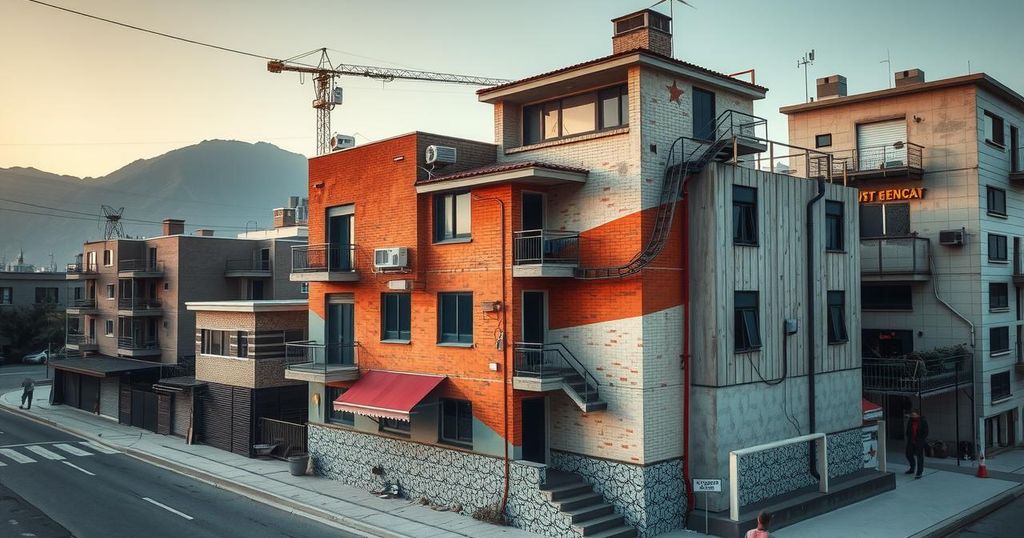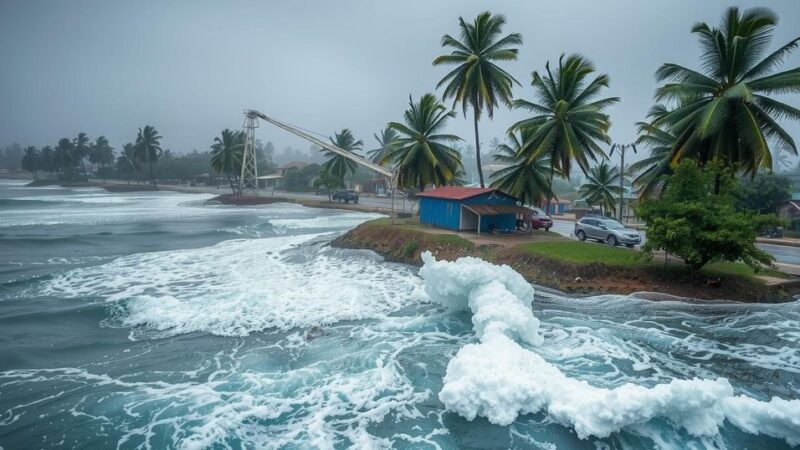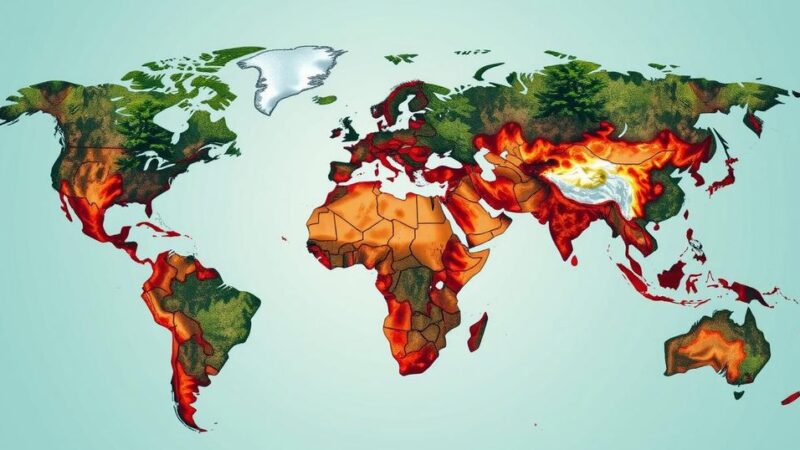In La Paz, Bolivia, residents like Cristobal Quispe confront dangerous living conditions on unstable hillsides, exacerbated by climate challenges. Despite municipal warnings declaring areas as perilous, many residents, driven by economic pressures, choose to remain in their homes, risking their safety. Climate change, poor urban planning, and social inequities complicate efforts to secure safe living environments for impoverished communities.
In La Paz, Bolivia, unstable living conditions challenge residents like shopkeeper Cristobal Quispe, whose humble home precariously rests on a hillside prone to motion. Following a devastating mudslide that destroyed his previous house in 2011, Quispe rebuilt near the original site, facing fears of further mudslides, especially during the rainy season from November to March. “We are afraid to live here. When it rains… there can be a mudslide,” stated Quispe, highlighting the dire circumstances faced by many impoverished inhabitants in his neighborhood, primarily consisting of the Aymara Indigenous group.
Despite local authorities deeming certain areas as perilous “red zones,” many residents lack viable options and opt to remain, holding hope that their land may appreciate in value. La Paz, set at over 11,500 feet, is crosshatched with rivers and streams, rendering the soil unstable, with around 20 percent of registered properties classified as being at high risk. As of last November, 16 deaths have occurred due to landslides and flooding attributed to heavy rains, a problem prevalent across Latin America due to ineffective urban planning that ignores the realities of climate change-induced natural disasters.
Urban development expert Ramiro Rojas emphasizes that Latin America presents heightened vulnerability to natural calamities compounded by social and economic inequalities. Cities in the region, where approximately 83 percent of people reside, often overlook the dangers of natural disasters, leaving many to inhabit unsafe zones. Furthermore, the emphasis on land ownership aimed at aiding disadvantaged communities inadvertently traps them in hazardous locations.
Nearby, Cristina Quispe operates a grocery store while facing similar threats. Though many neighbors have lost their homes to mudslides, she remains unperturbed, declaring, “I’m not afraid. I’m calm. Anyway, it’s not like I have somewhere else to go.” Lucas Morales, a mechanic, recounts his experiences of flood damage affecting his property, ultimately reflecting the broader negligence in urban planning that enables such disasters.
Stephanie Weiss, an environmental engineer, emphasizes La Paz’s critical lack of affordable housing, attributing the persistent risks to policies that encourage land ownership among impoverished families. Many residents aspire to maintain property, even if it is on precarious terrain, as a means of safeguarding their futures. The plight of Bolivians inhabiting hazardous areas underscores urgent needs for improved urban planning and investment in resilient infrastructure.
The article discusses the challenges faced by residents of La Paz, Bolivia, due to their precarious living conditions on unstable hillsides. It highlights individual stories to illustrate broader social and environmental issues, including inadequate housing, vulnerability to natural disasters, and the impact of urban planning. The precarious situation of the Bolivian people is exacerbated by extreme weather events associated with climate change, which have increased in frequency and severity. The economic pressures forcing individuals to occupy unsafe areas pose significant policy challenges for Bolivia’s municipalities and other regions facing similar vulnerabilities.
In conclusion, the testimonies from La Paz’s residents reveal significant risks associated with living in precarious environments where natural disasters are frequent. The desire for property ownership amidst economic vulnerabilities leads many to remain in dangerous areas, despite official warnings. This situation highlights an urgent need for comprehensive urban planning that prioritizes safety and resilience, aiming to protect vulnerable communities from the threats posed by climate change and natural disasters.
Original Source: www.barrons.com







